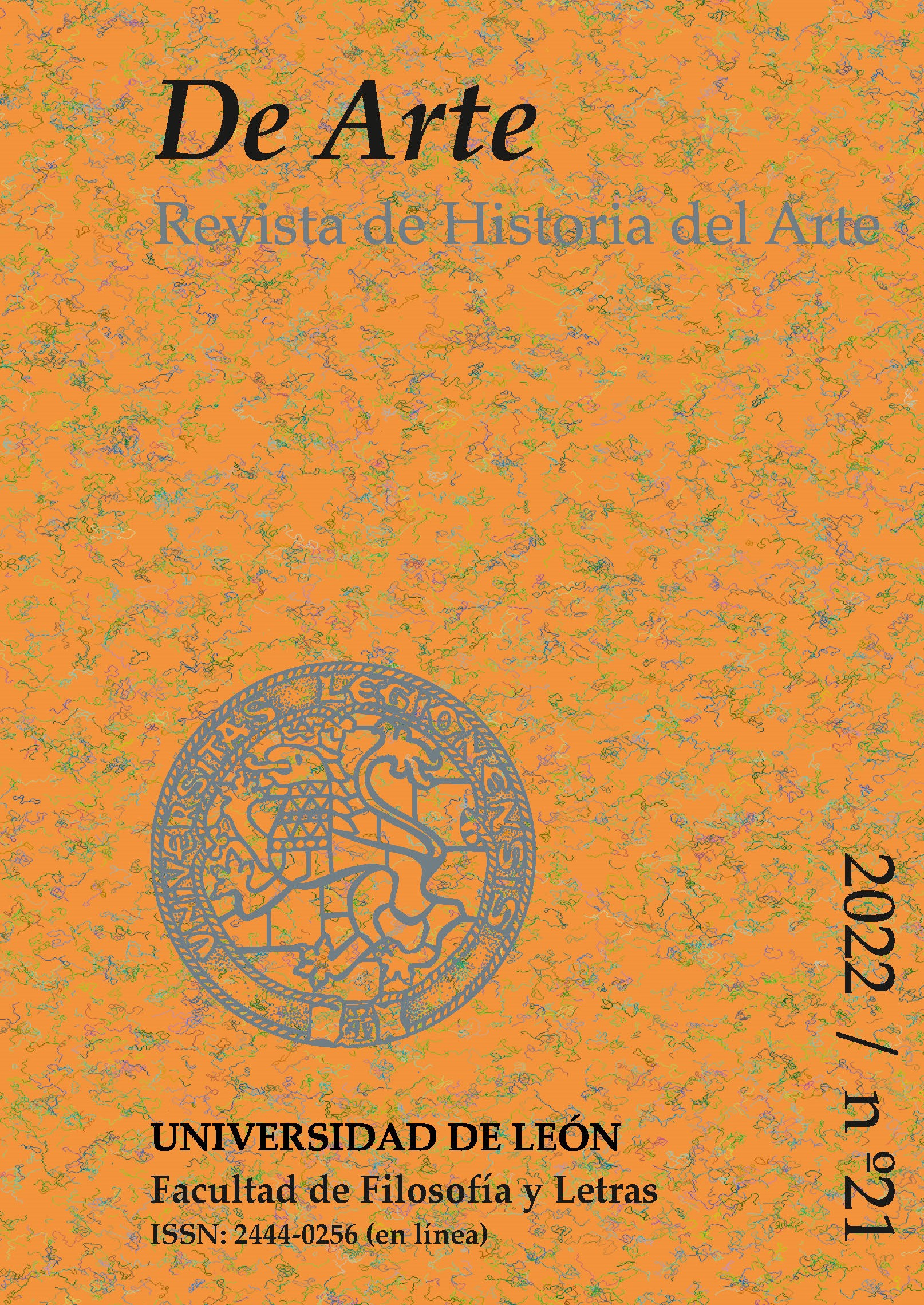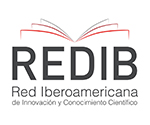Lujuria y música en la Mesa de los Pecados Capitales del Museo Nacional del Prado en Madrid
DOI:
https://doi.org/10.18002/da.i21.7044Palabras clave:
Jheronimus Bosch, Pintura flamenca (siglos XV y XVI), Iconografía musical, Siete pecados capitales, Lujuria (luxuria)Resumen
Hay tres objetivos de investigación establecidos en este artículo. El primero es mostrar la conexión de la lujuria con la música en la Mesa del Prado, en el contexto de las representaciones de la personificación del amor impuro en las obras indiscutibles del Bosco (Tríptico del camino de la vida, Tríptico del carro de heno). El segundo objetivo de la investigación es un intento de indicar las principales fuentes de inspiración para el pintor. El artículo termina con la interpretación de los elementos musicales en la escena de la Lujuria. La presencia de elementos comunes (entre otros: pretendientes/ amantes, un bufón, instrumentos musicales, vino y frutas) en las obras analizadas demuestra la existencia de un sistema artístico coherente en el taller del Bosco, basado en un fundamento mental-ideológico. De las fuentes iconográficas de inspiración para el pintor que hemos considerado las más importantes son las representaciones de Jardín del Amor y Niños de Venus. En la escena de la Lujuria, la figura que juega un papel principal es el bufón. No solo es interpretado como un músico sino también como la encarnación de un comportamiento socialmente indeseable.
Descargas
Métricas alternativas
Citas
Abraham Ibn Ezra’s. Introductions to Astrology. A Parallel Hebrew-English Critical Edition of the Book of the Beginning of Wisdom and the Book of the Judgments of the Zodiacal Signs. Translated and edited by Shlomo Sela. Leiden: Brill, 2017.
Baldass, Ludwig von. Hieronymus Bosch. New York: Harry N. Abrams, 1960.
Banks, Jon. "Performance in the Renaissance: an overview". In The Cambridge History of Musical Performance, edited by Colin Lawson and Robin Stowell, 297-317. Cambridge: Cambridge University Press, 2012.
Brant, Sebastian. The Ship of Fools. Translated into rhyming couplets with introduction and commentary by Edwin H. Zeydel, with the original one hundred and fourteen woodcuts. New York: Columbia University Press, 1944.
Brundage, James A. Law, Sex, and Christian Society in Medieval Europe. Chicago, London: University of Chicago Press, 1987.
Bruyn, Eric de. "Textos e imágenes. Las fuentes del arte del Bosco”. In El Bosco. La exposición del V Centenario, edited by Pilar Silva Maroto, 73-89. Madrid: Museo Nacional del Prado, 2016.
Bullough, Vern L. and James A. Brundage, eds. Sexual Practices and the Medieval Church. Buffalo NY: Prometheus Books, 1982.
Bullough, Vern L. and James A. Brundage, eds. Handbook of Medieval Sexuality. New York and Abingdon OX: Routledge, 1996.
Buzzati, Dino and Mia Cinotti. L’opera completa di Bosch. Milano: Rizzoli, 1966.
Casagrande, Carla and Silvana Vecchio. I sette vizi capitali. Storia dei peccati nel Medioevo. Torino: Einaudi, 2000.
Checa Cremades, Fernando, ed. Los Libros de entregas de Felipe II a El Escorial. Madrid: Patrimonio Nacional, 2013.
Coelho, Victor and Keith Polk. Instrumentalists and Renaissance Culture, 1420-1600. Players of Function and Fantasy. Cambridge: Cambridge University Press, 2016.
Combe, Jacques. Hieronymus Bosch. Duncan. London: B.T. Batsford Ltd., 1946.
Elsig, Frédéric. Jheronimus Bosch. La question de la chronologie. Genève: Librairie Droz, 2004.
Erasmus, Desiderius. The Praise of Folly. Mineola NY: Dover, 2003.
Falkenburg, Reindert L. The Fruit of Devotion. Mysticism and the imagery of love in Flemish paintings of the Virgin and Child, 1450-1550. Amsterdam and Philadelphia PA: John Benjamins Publishing Company, 1994.
Fernández de la Cuesta, Ismael. "La música, elemento natural de lo fantástico en la pintura de El Bosco". In El Bosco y la tradición pictórica de lo fantástico, edited by Victoria Malet, 127-66. Barcelona and Madrid: Galaxia Gutenberg, 2006.
Fischer, Stefan. Hieronymus Bosch. The Complete Works. Cologne: Taschen, 2013.
Gangelen, Hans van and Sebastiaan Ostkamp. "Parallels Between Hieronymus Bosch's Imagery and Decorated Material Culture from the Period Between circa 1450 and 1525". In Hieronymus Bosch. New Insights Into His Life and Work, edited by Jos Koldeweij, Bernard Vermet and Barbera van Kooij, 153-69. Rotterdam: NAi Publishers, Ludion, 2001.
Garrido, Carmen and Roger Van Schoute. Bosch at the Museo del Prado. Techical Study. Madrid: Museo del Prado, 2001.
Gelfand, Laura D. "Class, Gender, and the Influence of penitential Literature in Bosch's Depictions of Sin". In Jheronimus Bosch. His Sources. 2nd International Jheronimus Bosch Conference, May 22-25, 2007, ’s-Hertogenbosch, edited by Jill Bradley, Eric de Bruyn, Jos Koldeweij and Thomas Vriens, 159-73. ‘s-Hertogenbosch: Jheronimus Bosch Art Center, 2010.
Gibson, Walter S. Hieronymus Bosch. London: Thames and Hudson, 1973.
Gregory the Great. Morals on the Book of Job. Oxford: J. H. Parker, 1844-1850, vol.3.
Hammerstein, Reinhold. Diabolus in musica. Studien zur Ikonographie der Musik im Mittelalter. Bern and Munich: Francke, 1974.
Ilsink, Matthijs, Jos Koldeweij, Ron Spronk, Luuk Hoogstede, Robert G. Erdmann, Rik Klein Gotink, Hanneke Nap, and Daan Veldhuizen. Hieronymus Bosch, Painter and Draughtsman. Catalogue Raisonné. Brussels: Mercatorfonds, 2016
Koldeweij, Jos, Paul Vandenbroeck and Bernard Vermet. Hieronymus Bosch. The Complete Paintings and Drawings. Rotterdam and Ghent: NAi Publishers: Ludion, 2001.
Korrick, Leslie. "Instrumental Music in the Early 16th-Century Mass. New Evidence". Early Music, nº 18 (1990), 359-70.
Kubies, Grzegorz. "Angel trumpeters and poena sensus. A reflection on Jheronimus Bosch's Last Judgment triptych in the Groeningemuseum in Bruges." In Jheronimus Bosch. His Life and his Works. 4th International Bosch Conference, April 14-16, 2016, 's-Hertogenbosch, edited by Dawn Carelli and Hannah Gooiker, 178-98. 's-Hertogenbosch: Jheronimus Bosch Art Center, 2016.
Larsen, Erik. Bosch. The Complete Paintings by the Visionary Master. New York: Smithmark, 1998.
Lorris, Guillaume de and Jean de Meun, The Romance of the Rose. Princeton NJ: Princeton University Press, 1995.
Luttikhuizen, Henry. "Through Boschian Eyes. An Interpretation of the Prado Tabletop of the Seven Deadly Sins". In Sin in Medieval and Early Modern Culture. The Tradition of the Seven Deadly Sins, edited by Richard G.
Newhauser and Susan J. Ridyard, 261-81. Woodbridge and Rochester NY: York Medieval Press, Boydell Press, 2012.
McGee, Timothy J. "Vocal performance in the Renaissance". In The Cambridge History of Musical Performance, edited by Colin Lawson and Robin Stowell, 318-34. Cambridge: Cambridge University Press, 2012.
McKinnon, James, ed. Music in Early Christian Literature. Cambridge: Cambridge University Press, 1993.
Mezger, Werner. Narrenidee und Fastnachtsbrauch. Studien zum Fortleben des Mittelalters in der europäischen Festkultur. Konstanz: Universitätsverlag, 1991.
Mirimonde de, Albert P. "Le symbolisme musical chez Jérôme Bosch". Gazette des Beaux-Arts, nº 77 (1971), 19-50.
Misiarczyk, Leszek. Eight Logismoi in the Writings of Evagrius Ponticus. Turnhout: Brepols Publishers, 2021.
Montagu, Jeremy. The World of Medieval and Renaissance Musical Instruments. Woodstock NY: Overlook Press, 1976.
Munrow, David. Instruments of the Middle Ages and Renaissance. London: Oxford University Press, 1976.
Newhauser, Richard G. and Susan J. Ridyard, eds. Sin in Medieval and Early Modern Culture. The Tradition of the Seven Deadly Sins. Woodbridge and Rochester NY: York Medieval Press, Boydell Press, 2012.
Otto, Beatrice K. Fools Are Everywhere. The Court Jester Around the World. Chicago: University of Chicago Press, 2001.
Pinson, Yona. "Music". In Encyclopedia of Comparative Iconography. Themes Depicted in Works of Art, edited by Helene E. Roberts, vol.2, 629-37. Chicago and London: Fitzroy Dearborn, 1998.
Pinson, Yona. The Fools' Journey. A Myth of Obsession in Northern Renaissance Art. Turnhout: Brepols, 2008.
Pleij, Herman. Het gilde van de Blauwe Schuit. Literatuur, volksfeest en burgermoraal in de late middeleeuwen. Amsterdam: Meulenhoff, 1983.
Pleij, Herman. Op belofte van profijt. Stadsliteratuur en burgermoraal in de Nederlandse letterkunde van de middeleeuwen. Amsterdam: Prometheus, 1991.
Polk, Keith. "Instrumental performance in the Renaissance". In The Cambridge History of Musical Performance, edited by Colin Lawson and Robin Stowell, 335-52. Cambridge: Cambridge University Press, 2012.
Polo Pujadas, Magda. "La música instrumental y la música vocal en Hieronymus Bosch". Matèria. Revista internacional d'Art, nº 10-11 (2016), 149-68.
Schaik, Martin van. The Harp in the Middle Ages. The Symbolism of a Musical Instrument. Amsterdam and New York: Rodopi, 2005.
Schillinger, Jean, ed. Der Narr in der deutschen Literatur im Mittelalter und in der frühen Neuzeit. Kolloquium in Nancy (13.-14. März 2008). Bern: Peter Lang, 2009.
Schneider, Norbert. Von Bosch zu Bruegel. Niederländische Malerei im Zeitalter von Humanismus und Reformation. Berlin and Münster: LIT, 2015.
Schoute, Roger Van and Monique Verboomen. Jérôme Bosch. Tournai: Renaissance du Livre, 2001.
Seebass, Tilman. "Idee und Status der Harfe im europäischen Mittelalter". Basler Jahrbuch für Musikpraxis, nº 11 (1987), 139-152.
Silva Maroto, Pilar. ed. El Bosco. La exposición del V Centenario. Madrid: Museo Nacional del Prado, 2016.
Silver, Larry. Hieronymus Bosch. New York: Abbeville Press, 2006.
The Travels of Sir John Mandeville. The version of the Cotton Manuscript in modern spelling. With three narratives, in illustration of it, from Hakluyt's 'Navigations, Voyages and Discoveries'. London: Macmillan, 1900.
Unverfehrt, Gerd. Wein statt Wasser. Essen und Trinken bei Jheronimus Bosch. Göttingen: Vandenhoeck & Ruprecht, 2003.
Vandenbroeck, Paul. Jheronimus Bosch. De verlossing van de wereld. Ghent amd Amsterdam: Ludion, 2002.
Vázquez Dueñas, Elena. El Bosco en las fuentes españolas. Madrid: Doce Calles, 2016.
Vellekoop, Kees. "Music and Dance in the Paintings of Hieronymus Bosch". In Hieronymus Bosch. New Insights Into His Life and Work, edited by Jos Koldeweij, Bernard Vermet and Barbera van Kooij, 201-5. Rotterdam: NAi Publishers, Ludion 2001.
Descargas
Publicado
Número
Sección
Licencia
Derechos de autor 2022 Grzegorz Kubies

Esta obra está bajo una licencia internacional Creative Commons Atribución-NoComercial-CompartirIgual 4.0.
Los autores que publican en esta revista están de acuerdo con los siguientes términos:
- Los autores ceden de forma no exclusiva los derechos de explotación (reproducción, distribución, comunicación pública, transformación) a la Universidad de León, por lo que pueden establecer, por separado, acuerdos adicionales para la distribución no exclusiva de la versión de la obra publicada en la revista (por ejemplo, alojarlo en un repositorio institucional o publicarlo en un libro), con un reconocimiento de su publicación inicial en esta revista.
- Este trabajo se encuentra bajo la Creative Commons Attribution-NonCommercial-ShareAlike 4.0 International License. Puede consultarse desde aquí la versión informativa y el texto legal de la licencia.
- Se permite y se anima a los autores a difundir electrónicamente las versiones pre-print (versión antes de ser evaluada) y/o post-print (versión evaluada y aceptada para su publicación) de sus obras antes de su publicación, ya que favorece su circulación y difusión más temprana y con ello un posible aumento en su citación y alcance entre la comunidad académica.









